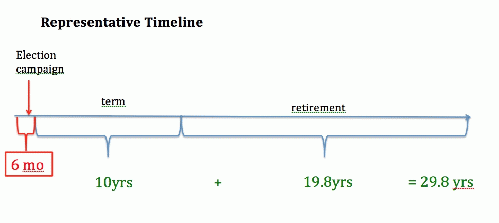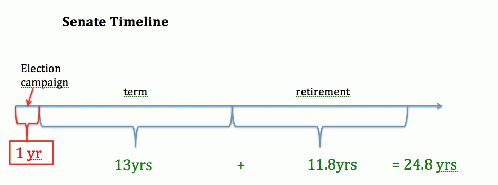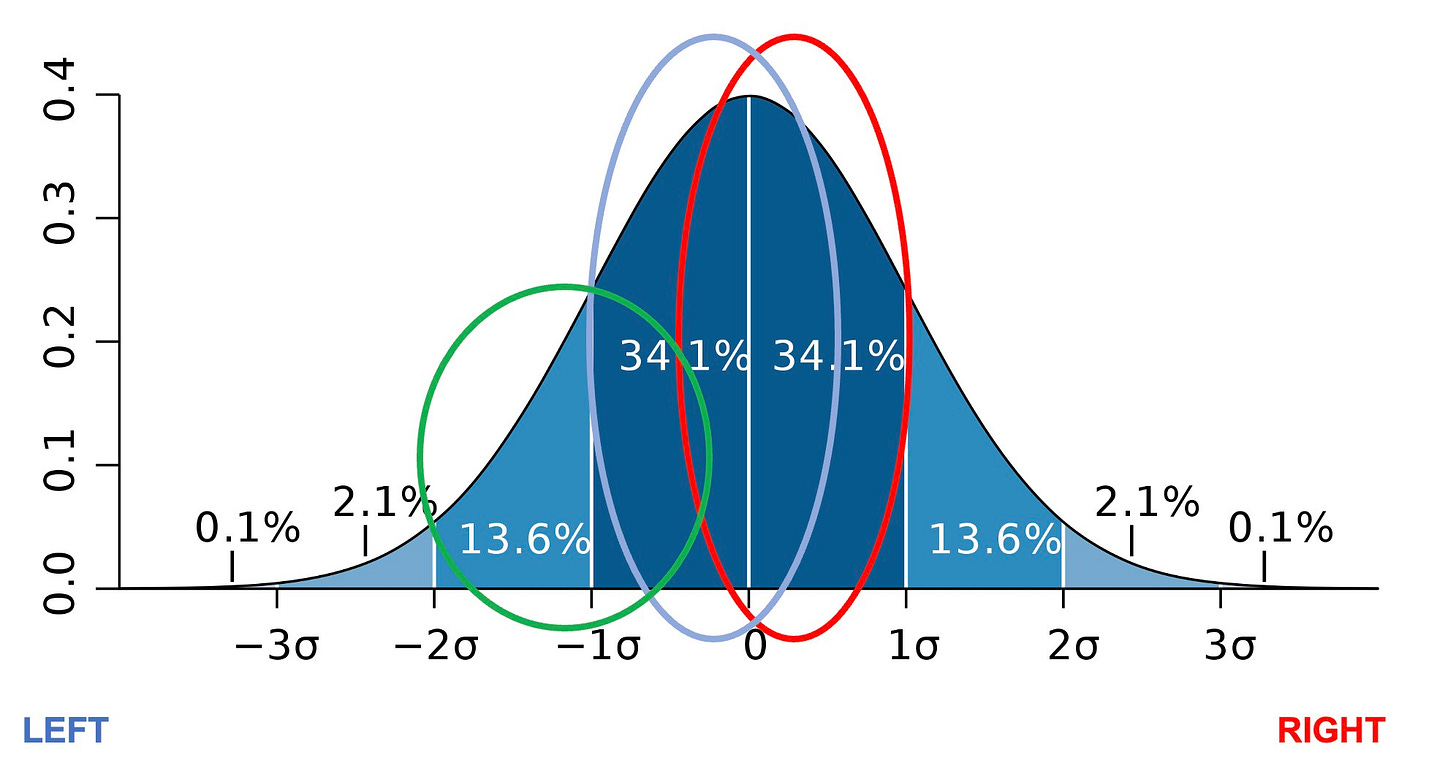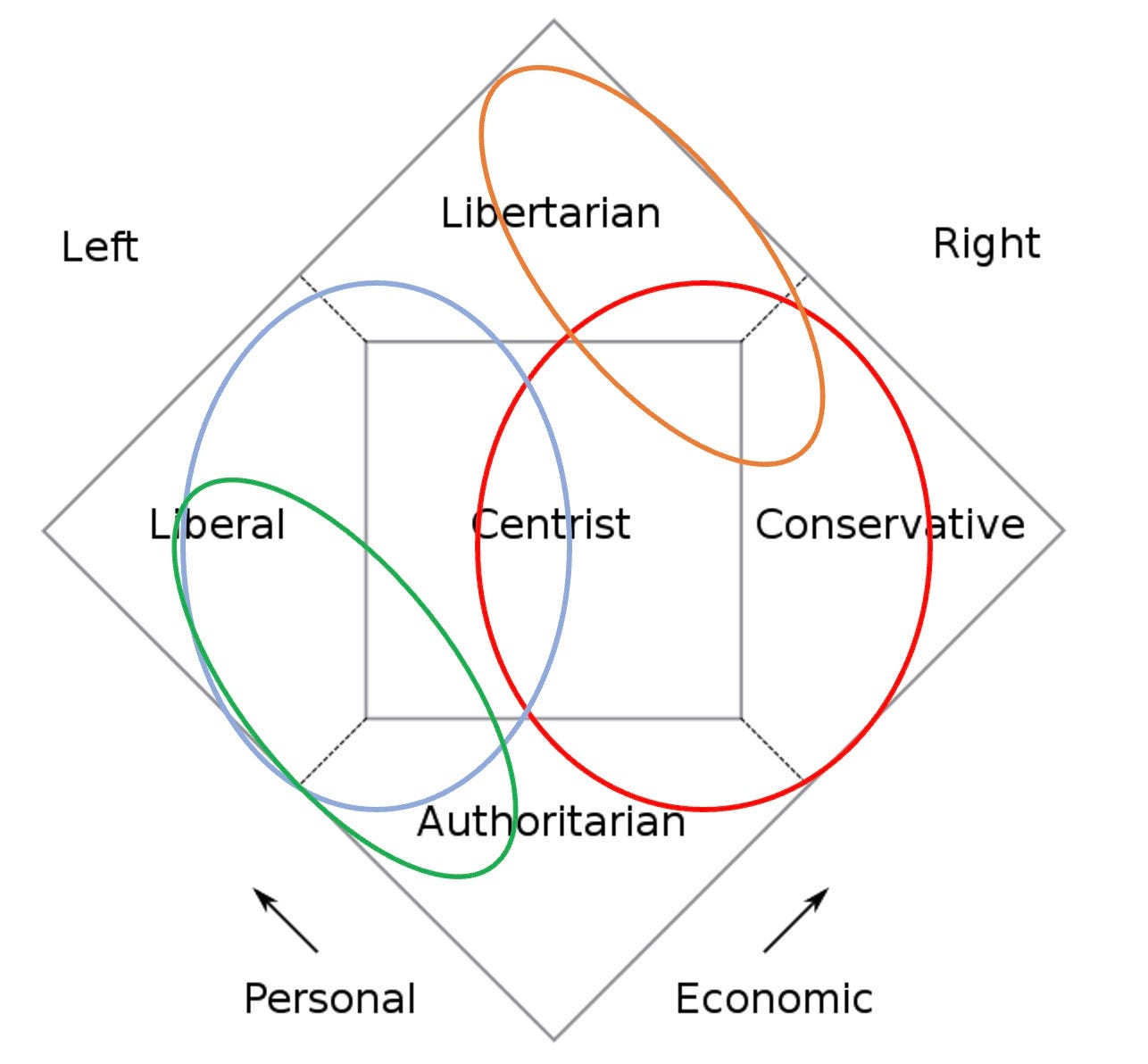Why You are Stuck with Trump vs. Biden
An explanation of the Overton window in American politics
“The smart way to keep people passive and obedient is to strictly limit the spectrum of acceptable opinion, but allow very lively debate within that spectrum....”
― Noam Chomsky, The Common Good 1998“The United States is an oligarchy with unlimited political bribery.”
--former President Jimmy Carter (Thom Hartmann program 2015)Question: So how did we end up with a lifelong grifter, real estate scammer, deadbeat, and pathological lying, Zionist, game show host (Trump) against a demented, war mongering, hair sniffing, Zionist, racist (Biden) in the race for President in 2020 and 2024? Is this the best we can do?
Short Answer, two policies of the United States government:
#1) Single member voting districts; ie: “first-past-the post; plurality voting, winner-takes-all resulting in the Duverger’s Law outcome of a two party system.
#2 Supreme Court “Citizen’s United” decision allowing unlimited donations of money to candidates under the guise of “free speech”.
Do you think this was an accident? These problems could be fixed easily any time the Congress wanted to, but they don’t want to obviously. Did you hear about the study by Gilens (Princeton) and Page (Northwestern) of 20 years of US policy decisions comparing them to US public opinion? Their conclusion: ““The preferences of the average American appear to have only a miniscule, near-zero, statistically non-significant impact upon public policy.” Meanwhile the upper 10% of income earners have a significant impact. Read it yourself, link. This study proves statistically and empirically what everyone already knows, money controls politics in the US. When people outside the US ask me about corruption in US politics, I explain that we solved that problem. How did you do that?” We legalized it. As George Carlin said, “They want more for them and less for everyone else”. The system is working just fine for the 1%.
But how do you explain that the US became a kakistocracy, meaning rule by idiots? Well that can also be explained by Duverger’s Law, an emergent property of the single member voting districts used in most Anglo countries including the US. The best candidate does not always win, in fact they rarely do, because elections are not on merit. Duverger’s Law is something every American should know about, but Americans are dolts who don’t know anything about politics other than what they are spoon fed within the Overton window. Duverger’s Law is a mathematical explanation of why our voting system results in a two-party system. Americans look at Europe or most other countries and see many political parties active in government, but they never ask themselves why.
Typical European Parliament, Germany for example (source: link)
As you can see there are seven political parties represented in the German Parliament (Bundestag) plus 5 independents. That’s because they have proportional representation of each party’s percentage of the vote. Parties typically don’t have a majority and must form coalitions to obtain over 50% ruling majority. I will explain further below why we don’t have this.
The second problem of unlimited political bribery can be blamed on the Supreme Court, but Americans themselves are also to blame. I have personal experience in this matter having talked to many voters about political donations while working on a 1992 Congressional campaign. On this issue I echo Winston Churchill’s comment, “The best argument against democracy is a five minute conversation with the average voter”. When confronted with the obvious solution of publicly financed political campaigns, and banning private and corporate money in politics, the answer of the average voter is, “I don’t want to support those corrupt politicians by giving them my money. Hell, no to public financing!” OK, you get what you pay for, the best government money can buy. I have written about this extensively before (see link and link). The public is already paying for the entire cost of every politician in government from election to death (through their pensions), but refuse to pay for the most important part, which is the small period of time during election campaigns when politicians receive all the bribery (donations). Here are the relevant graphs:
As shown in these timelines, the average US Representative serves for 10 years in the House plus receives a retirement pension for 19.8 years for a total time of 29.8 years supported by taxpayers. The average Senator serves for 13 years plus retirement pension for 11.8 years for a total of 24.8 years supported by taxpayers. While they are in office, taxpayers are supporting the Capital building, the member's salary, staff, office, telephone, utilities, travel, home office, meals, etc. etc. Taxpayers are supporting all of their expenses from the day they are elected until the day they leave Congress, and then support their retirement until the day they die, 25-30 years altogether. I estimated House campaigns to last 6 months and Senate campaigns to last a year, but they may be longer than that now. In any case it is a short period of time compared to the time in office and retirement. But the public doesn’t want to provide financial support for the crucial period during election campaigns when all the bribery takes place. How stupid is that? Lobbying is another problem I won’t get into, but obviously has the same bribery problem.
Now let’s get back to Duverger’s Law. You can read about it on Wikipedia if you want (link). But I would explain it by the bell curve and standard deviation. Don’t let your eyes glaze over, this is really simple. Here’s Wikipedia for more (link).
Let’s call this the political spectrum from left to right. The little symbol under the graph is called sigma, and it just means standard deviations from the norm in the middle. So if there is only one person elected in each district, then the person has an incentive to choose positions in the middle and try to appeal to some of the other parties voters. In the example above the left (blue) is capturing the center left voter (34.1%) plus trying to capture half the right voters (17%) in order to reach 50%. Since most of the voters are in the middle it makes sense to appeal to them. The party on the right does the same thing resulting in two parties with nearly similar positions on everything, except maybe in unimportant social and cultural issues, while having identical positions on the economy and foreign policy. Oh, wait, that’s what we have now!
Let’s say the left party tried to appeal to the more extreme left positions located in the second standard deviation from the norm accounting for 13.6%. Well that would only add up to 47.7% and would alienate all the right voters. So it’s a safer bet to stay in the middle and become the blob, or uni-party which has very little difference between the two parties. That’s Duverger’s Law.
What if a third party on the left is running, shown in green for example. Well the left party will scream bloody murder about stealing their votes, and guaranteeing the right party will win, and it’s the end of the world, and third parties are the devil basically. Is this true? No, of course not. Congress could fix this problem easily if they wanted to but they prefer to keep the duopoly. All they have to do is adopt ranked-choice voting as they do in Australia, and the problem goes away. You can vote for third parties, but if they don’t get into the top two then the vote transfers to your second choice, so third parties can never cause the opposite party to win.
This analysis also works using the classic Nolan chart favored by libertarians to depict two axes of personal and economic freedom, or state (authoritarian) vs. individual (freedom), and left vs. right. Greens and libertarians are depicted as 3rd and 4th parties showing why the centrist parties always win.
Nolan chart. Source wikipedia
The duopoly does everything it can to prevent other parties from getting elected. They restrict ballot access by requiring astronomical numbers of signatures. They keep them out of debates. They restrict their fund-raising ability. They send fake election notices to their members. They have arrested other parties’ members who try to attend debates even just to sit in the audience. This happened to both Ralph Nader and Jill Stein. They smear them with untrue allegations. They red-bait them. They use many dirty tricks to restrict competition. Coke or Pepsi, that is the only choice we get. What if I like Sprite? Tough luck.
Here is another problem with single-member districts, also called plurality voting. Let’s say there are three candidates running. Take the Colorado Electoral College in 1992 for example:
Bill Clinton got 40.13% of the vote, George HW Bush got 35.87% of the vote, and Ross Perot got 23.32% of the vote.
Do the math: 35.87 (Bush) + 23.32 (Perot) = 59.19% of the people voted against Clinton but he still won all 8 electoral votes. That's a landslide against Clinton. But winner-takes-all. How stupid is that? See for yourself:
https://en.wikipedia.org/wiki/1992_United_States_presidential_election_in_Colorado
There are many other examples in my article.
Most countries require a majority (over 50%) of the votes to get elected, but in our plurality system there is no runoff, so the person with the most votes wins, even if most people vote against them. Ranked-choice is also called instant-runoff because it solves this problem and only elects someone with a majority of the vote. I have written more about it here: link. Proportional representation in the House of Representatives would also solve the problem, but most American think that can only be done in a Parliamentary system.
The counterargument to these points is that many Western countries are now headed by WEF Globalists such as Trudeau in Canada, Macron in France, Schulz in Germany, Albanese in Australia, Rutte in the Netherlands, Tusk in Poland, etc. So having a more democratic system is not a guarantee of better leaders, but at least it has the potential.








It is up to the individual states to adopt ranked-choice voting, not Congress.
https://www.law.cornell.edu/constitution-conan/article-1/section-4/clause-1/role-of-the-states-in-regulating-federal-elections